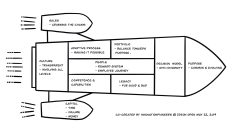The SAMR model is a great tool for scoping innovation complexity. It makes it easy to identify and describe an organization’s purpose of a certain project. If it aims fundamentally changing existing infrastructure or improving processes in today’s ongoing business.
These are two fundamentally different things and two totally different toolsets which are necessary. Companies are usually very focused and drives excellence on daily bases, improving processes. When it comes to building something from scratch, they tend to fumble in the dark. They seem unprepared for the immense complexity, even retire the existing process in order to form the new paradigm.
Imagine that you are in a meeting with a group of nurses, the extremely hard-working and engaged staff who work their backs off every day to support and provide for their clinics.
They are trained and skilled at using the world-class medical equipment provided by their employers. Now imagine there are other, non-medical tools needed with technical features to improve the results of the daily tasks performed on the floor. These tools are not as well cared for by the top management at the hospital or clinic.
In such a discussion, almost every nurse will describe a few of the workplace’s shortcomings, challenges that could easily be reduced with better tool kits. In less than two hours, over a hundred ideas based on everyday challenges that were stealing seconds, minutes, hours, days, weeks and even months from the entire organization will be added to a Wishlist. Great ideas that would help to improve daily routines.
Their ideas probably will have one thing in common: to support the existing processes for getting things done. They may even lead to request a set of automation tools which could completely cut themselves out of the equation, clearly not in their interest by nature. These nurses are focused on doing their jobs and set out to solve the everyday task, not rearrange and reorganize company structure. Therefore, it’s not their responsibility to drive transformation to secure a sustainable platform for the company. That work must be governed and driven by the company’s ownership structure or from someone in top management.
By separating the two different kinds of development, success rates will increase dramatically. Development intended to support existing process is best initiated with the people executing the process. Then the organization understands that the intended development to replace an old process has other needs. Most importantly, it also understands why it should be championed by someone with the toolset to act in a more complex context.
Get in touch with us to hear how your organization can scope innovation complexity.




